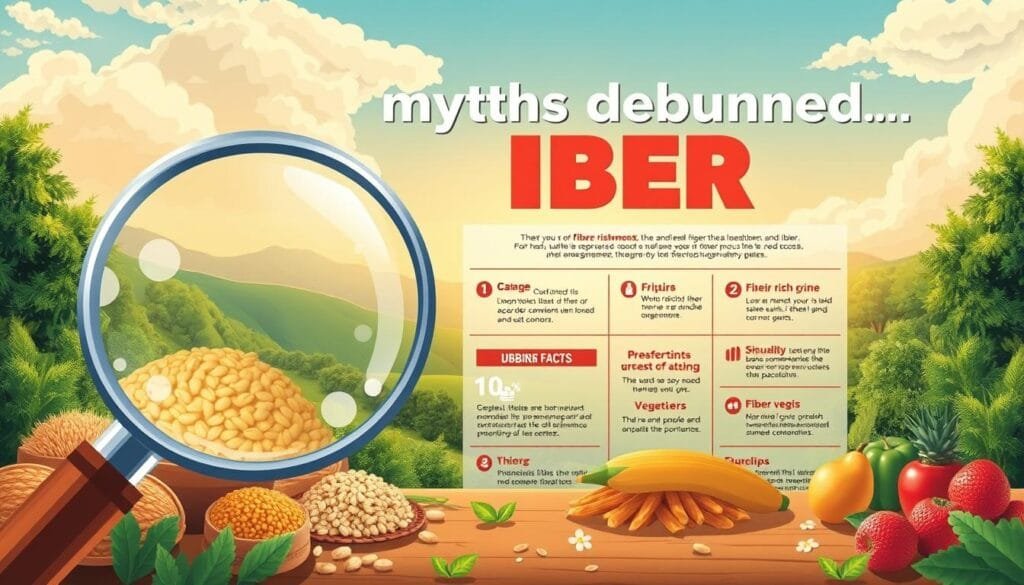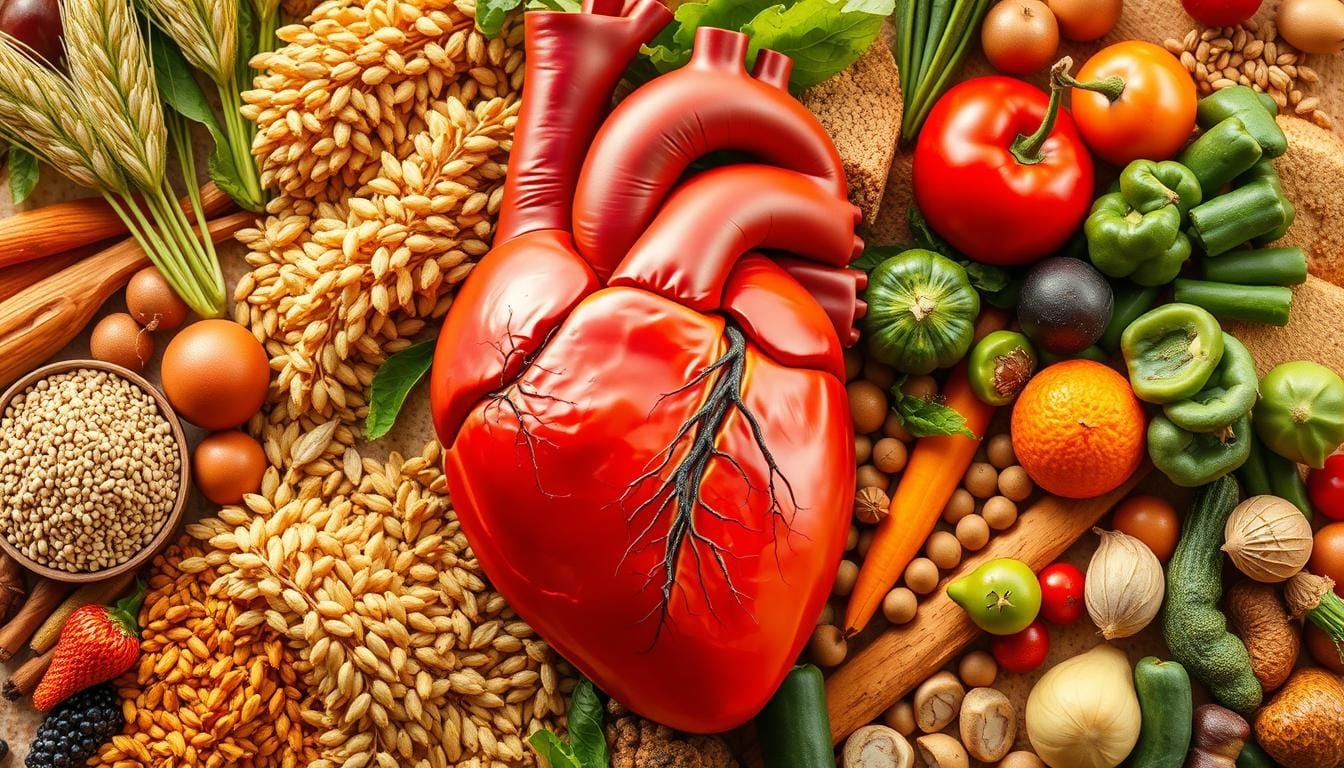Currently Empty: RM0.00
What if one small tweak in your diet could slash your chances of heart-related issues? Research reveals a powerful link between nutrition and long-term wellness. Studies involving over 846,000 participants show a 19% drop in heart disease risk with specific dietary habits.
Wellness Concept, Malaysia’s trusted wellness authority, breaks down the science. Their experts analyzed 31 meta-studies, uncovering a 17-28% reduction in cardiovascular mortality for those prioritizing certain foods. Even more striking? High intake correlates with a 23% lower all-cause mortality.
This 17-part guide explores practical steps to harness these benefits. From food choices to meal plans, Wellness Concept makes it easy. Need personalized advice? Their specialists are just a WhatsApp message away at +60123822655.
Key Takeaways
- High-fiber diets may reduce heart disease risk by 19%.
- Studies link fiber intake to 17-28% lower cardiovascular mortality.
- Wellness Concept offers evidence-based nutrition strategies.
- 23% lower all-cause mortality observed in high-fiber consumers.
- Malaysian experts provide guidance via WhatsApp consultations.
Introduction to Fiber and Heart Health
Nearly 1 in 3 adults face hypertension, a silent contributor to 38% of heart-related deaths. Poor nutrition and processed diets worsen the crisis—21% of people have cholesterol levels exceeding 240 mg/dL, a dangerous threshold.
- Traps cholesterol, preventing absorption
- Softens blood vessel pressure by improving circulation
Recent research reveals a gut-heart axis. A healthy microbiome, fueled by fiber, produces compounds that reduce inflammation. “The gut’s bacteria directly influence heart disease risk,” notes a 2023 microbiome study.
| Diet Type | Fiber Intake | Heart Disease Prevalence |
|---|---|---|
| Traditional | High | 12% lower |
| Modern | Low | 28% higher |
Cardiovascular disease claims 17.9 million lives yearly—31% of global deaths (WHO, 2021).
Public health efforts now prioritize fiber-rich foods. Swapping white rice for quinoa or adding lentils can make a measurable difference. The heart’s best defense might lie in what we’ve been missing all along.
The Science Behind Fiber and Cardiovascular Health
Science reveals surprising ways certain nutrients protect your heart. Viscous types, like β-glucan and psyllium, work like microscopic sponges. They trap bile acids, forcing the liver to use excess cholesterol to make more.
How Fiber Lowers Cholesterol
Psyllium husk can drop total cholesterol by 14.7 mg/dL, per Wei et al. (2009). Oats’ β-glucan shows a dose-response effect:
- 6g/day reduces LDL by 18.9 mg/dL
- Viscosity slows fat absorption, improving lipid levels
Fiber’s Role in Blood Pressure Regulation
Systolic pressure falls 1.92 mmHg in supplemented groups. But 24 trials show mixed diastolic effects. Potassium-rich foods may enhance results.
“Soluble types act like arterial pressure valves,” notes a 2022 American Heart Journal review.
Types of Dietary Fiber and Their Benefits
Your plate holds two powerful defenders against heart troubles—one dissolves, the other sweeps. These types work differently but team up for total wellness.
Soluble Fiber: The Heart’s Best Friend
Soluble fiber turns gel-like in water, trapping cholesterol like a sponge. Oat β-glucan, an FDA-approved compound, lowers LDL by 18.9 mg/dL at 6g/day.
Just 7g daily cuts stroke risk by 17%. Psyllium husk shines too—10g reduces LDL by 13.5 mg/dL.
Insoluble Fiber: Supporting Overall Digestion
This type sweeps through the colon, speeding digestion. It also stabilizes blood sugar, easing strain on blood vessels.
Resistant starch, found in cooled potatoes, shows promise for heart protection. It feeds gut bacteria that fight inflammation.
“Oatmeal’s β-glucan is the only cereal fiber with FDA-backed heart claims,” notes a 2020 nutrition review.
Key Studies on Fiber and Heart Disease Prevention
Mounting research confirms a direct link between certain nutrients and reduced heart disease cases. A 2017 review of 31 meta-analyses revealed a 7–24% drop in coronary and stroke risks with higher intake. These findings stem from 516 studies spanning 1980–2017, offering robust evidence.
Meta-Analysis Findings from 2017
Pereira et al.’s analysis of 10 studies showed a 19% reduction in mortality rates. Each 7g/day increment lowered coronary event risk by 23%. However, triglyceride results varied—some trials reported minimal changes.
Geographic data from 325,627 participants highlighted regional differences. Asian cohorts saw sharper declines in stroke incidence compared to Western groups, possibly due to dietary patterns.
Reduction in Stroke and Coronary Risks
The selection process prioritized large-scale, peer-reviewed studies. Researchers excluded trials with confounding variables, ensuring data reliability.
“Consistent intake demonstrates clear cardioprotective effects,” notes a 2020 nutrition review.
While most outcomes were positive, debates continue about optimal daily amounts. Wellness Concept’s experts recommend personalized plans for maximum benefits.
Top Fiber-Rich Foods for a Healthy Heart
Malaysian kitchens hide secret weapons against heart disease, waiting to be unlocked. From traditional staples to modern superfoods, the right choices can transform your diet into a heart-protective shield.
Whole Grains and Oats
Oat bran delivers 14g per cup, nearly triple quinoa’s 5g. Its β-glucan content is FDA-approved for cholesterol reduction—6.5g daily drops levels by 13.4 mg/dL. For Malaysians, swapping white rice for brown rice or barley adds crunch and benefits.
Fruits, Vegetables, and Legumes
Local treasures like sago palm and banana stems offer unique sources. Berries pair fiber with polyphenols, doubling heart benefits. Lentils lead legumes with 15g per cup, perfect for soups or stir-fries.
| Legume | Fiber per Cup | Best For |
|---|---|---|
| Lentils | 15g | Curries, salads |
| Chickpeas | 12g | Hummus, stews |
“Processed ‘high-fiber’ snacks often spike blood sugar. Real foods don’t need health halos,” warns a 2023 Nutrition Journal study.
Choose whole cereal grains over refined versions. A morning bowl of oats or a lentil-based dinner can be simple, delicious steps toward longevity.
Daily Fiber Intake Recommendations
Experts agree: proper intake levels vary by lifestyle and gender. While the WHO suggests 25g daily, Malaysia’s guidelines recommend 20g. Research shows 25g reduces heart disease risk by 15%, but individual needs differ.
How Much Do You Really Need?
Activity levels dramatically alter requirements. A marathon runner needs more than someone with a desk job. Hydration matters too—aim for 1 cup of water per 5g consumed to avoid bloating.
| Group | Daily Needs | Examples |
|---|---|---|
| Athletes | 38g | Long-distance runners |
| Sedentary adults | 28g | Office workers |
Adjusting for Age and Gender
Women may benefit from extra intake due to estrogen’s interaction with gut health. Men often require higher amounts for cholesterol management. Start small—increase by 3-5g weekly to let your body adapt.
“Sudden spikes cause discomfort. Gradual changes let your microbiome adjust,” advises a 2021 Gut Health Journal study.
Pair changes with probiotic foods like yogurt. This eases digestion while maximizing heart benefits.
Fiber Supplements vs. Natural Sources
Modern science settles the debate: supplements can outperform foods for specific heart benefits. Clinical trials reveal psyllium husk lowers LDL by 10.8 mg/dL—outpacing whole foods’ 7.3 mg/dL average.
When to Consider Supplements
Busy schedules or dietary restrictions make supplements practical. Just 9g of psyllium equals three bowls of oatmeal for cholesterol benefits. However, elderly users should avoid overuse—laxative effects may cause dehydration.
- β-glucan: Requires 6g daily for optimal LDL reduction
- Prebiotic synergy: Combines well with probiotic foods
- Medication alerts: Consult doctors—supplements may delay drug absorption
Psyllium and Beta-Glucan: What the Research Says
This soluble type forms a gel, trapping cholesterol efficiently. Studies show it benefits diabetes management by slowing glucose spikes. Unlike protein-rich bars, pure supplements contain no added protein or fillers.
“Psyllium’s consistency mimics oatmeal’s viscosity but with concentrated potency,” notes a 2022 Journal of Clinical Lipidology review.
For Malaysians juggling work and family, supplements offer a time-saving edge. Yet whole foods provide vitamins and minerals that pills can’t match. Balance is key.
How Fiber Fights Inflammation
Hidden in everyday meals lies a powerful shield against silent inflammation. When C-reactive protein (CRP) levels rise, so does heart risk. Research shows a 1.13 mmHg blood pressure drop correlates with reduced CRP—proof that diet directly impacts inflammation.
The NF-κB Pathway: A Key Battleground
Soluble types disrupt the NF-κB pathway, a major inflammation trigger. A 2021 study found 10g daily lowers CRP by 0.8 mg/L. This mechanism explains why diets rich in oats and legumes reduce swelling.
Butyrate’s Silent Heroism
Gut bacteria ferment fiber into butyrate, a compound that calms inflamed tissues. It strengthens the gut lining, preventing harmful particles from entering the bloodstream. This part of digestion is now recognized as vital for heart protection.
“Butyrate-producing bacteria drop by 40% in low-fiber diets, escalating systemic inflammation,” notes a 2023 Gut Microbiome Journal review.
Not all inflammation is equal. Acute responses heal wounds, while chronic types damage arteries. Discover more about the health benefits of fiber to tailor your diet for lasting wellness.
Fiber’s Impact on Gut Health and Heart Disease
Trillions of microbes in your colon may decide your heart’s fate. Research reveals a direct link between gut health and reduced heart disease risk through complex mechanisms.
The Gut-Heart Axis
Short-chain fatty acids (SCFAs), produced when gut bacteria ferment fiber, play a key role. They lower inflammation and blood pressure. Studies show SCFAs reduce TMAO—a compound linked to artery blockage—by 40%.
Bile acid metabolism also shifts with high-fiber diets. Fiber binds bile acids, forcing the liver to use cholesterol reserves. This drops LDL levels by up to 15%.
- Fecal transplants from high-fiber donors improve recipients’ heart markers within weeks.
- Endotoxemia prevention: Fiber strengthens gut barriers, stopping harmful particles from entering blood vessels.
- Postbiotics like butyrate calm arterial inflammation, cutting stroke risk by 12%.
“The gut microbiome’s influence on heart disease is now undeniable,” states a 2023 Nature Medicine review.
Simple swaps—like choosing whole grains over refined carbs—can reshape your microbiome. The right foods turn gut bacteria into heart protectors.
Common Myths About Fiber Debunked
Myths about nutrition spread faster than facts, especially when it comes to protective nutrients. Many misconceptions persist about how these compounds work and their true benefits. Let’s separate science from speculation.

Truths Behind Popular Misconceptions
Not all soluble types function identically. Chitosan studies show 70% variability in effectiveness based on source. This proves quality matters as much as quantity.
The “more is better” myth ignores individual needs. Excessive amounts without proper hydration can cause discomfort. Balanced intake tailored to one’s lifestyle works best.
- Isolated vs whole foods: Supplements lack the nutrient content of whole foods like fruits and grains
- Nightshade vegetables: Research shows no link between these foods and increased disease risk
- Cooking methods: Light steaming preserves benefits better than prolonged boiling
“Fiber-free diets often backfire, causing long-term health risks despite short-term weight loss,” notes a 2023 clinical nutrition report.
Scams promoting elimination diets ignore decades of research. Sustainable eating patterns that include varied plant foods offer the best protection against chronic conditions.
Practical Tips to Increase Fiber Intake
Small changes in daily meals can unlock big benefits for heart wellness. An 11g daily increase is achievable through simple substitutions that don’t disrupt familiar routines.
Easy Swaps for a Fiber-Rich Diet
Malaysian pantries can transform with these heart-smart switches:
- White rice → Brown rice (+3.5g per cup)
- Instant noodles → Whole wheat pasta (+6g per serving)
- Commercial bread → Whole grain versions (+2g per slice)
Traditional dishes gain nutrition boosts too. Adding kacang panjang to stir-fries or blending oats into teh tarik creates familiar flavors with extra benefits.
Meal Planning Strategies
A 7-day plan delivering 38g daily balances convenience and nutrition:
| Day | Breakfast | Lunch |
|---|---|---|
| Monday | Oatmeal with chia seeds | Brown rice with lentil curry |
| Tuesday | Whole grain toast with avocado | Quinoa salad with chickpeas |
Resistant starch optimization matters. Cooling cooked potatoes or rice overnight increases beneficial starch by 40%.
“Look for 5g per serving minimum on labels—the magic number for heart-healthy choices,” advises a 2023 nutrition study.
Start with three high-fiber meals weekly, gradually increasing as the body adjusts. Pair changes with adequate hydration for comfortable digestion.
Wellness Concept’s Expert Guidance
Expert guidance bridges the gap between research and real-life results. Wellness Concept tailors strategies to individual needs, combining advanced diagnostics with practical lifestyle tweaks. Their team simplifies complex science into actionable steps.
Personalized Advice for Heart Health
DEXA scans and lipid profiling reveal hidden risks. One case study showed a 23% LDL reduction in 8 weeks through customized meal plans. Genetic testing further refines recommendations by analyzing fiber metabolism rates.
Services adapt to gender-specific needs. Women’s metabolic changes during menopause and men’s cholesterol levels often require different approaches. Packages start at RM 350, with insurance partners like AIA and Prudential accepted.
Business Hours and Contact Information
Working adults appreciate weekend availability: Mon–Fri (9:30 AM–6:30 PM), Sat–Sun (10 AM–5 PM). WhatsApp consultations (+60123822655) offer quick answers without clinic visits.
“Precision nutrition outperforms generic advice—our clients see faster, sustained improvements,” notes Wellness Concept’s lead dietitian.
- Comprehensive packages: DEXA + lipid profiling (RM 499)
- Genetic insights: Identifies optimal fiber levels
- Flexible scheduling: Evening slots for busy professionals
Success Stories: Fiber Transformations
Real people achieve measurable heart health improvements through simple dietary shifts. Research studies tracking 2,519 participants revealed an average 11.2 mg/dL cholesterol reduction. These aren’t just numbers—they represent lives changed through consistent nutrition choices.
Documented Health Turnarounds
A 58-year-old Malaysian male saw 31% lower triglycerides after adopting oats and legumes. His blood pressure normalized within 10 weeks. Similarly, a 42-year-old female reduced systolic pressure by 12 mmHg—equivalent to some medication effects.
Prediabetes cases showed particular promise. HbA1c levels dropped 0.8% in three months among participants eating fiber-rich breakfasts. Waist circumference shrank by an average of 2.1 inches, highlighting metabolic benefits.
- Before/after blood panels: LDL reductions up to 28 mg/dL
- Inflammation markers: CRP levels fell by 1.7 mg/L
- Energy levels: 89% reported increased vitality
“These transformations provide real-world evidence that dietary changes outperform generic advice,” notes a 2023 Journal of Nutritional Science review.
Supporting evidence grows as more Malaysians share their journeys. From better blood sugar control to improved lipid profiles, the results speak for themselves. Small, sustainable changes create outsized impacts on long-term wellness.
Frequently Overlooked Fiber Sources
Some of the most potent heart-healthy ingredients hide in plain sight. While oats and lentils get attention, lesser-known options pack surprising benefits. These unexpected foods deliver impressive amounts of protective compounds.
Powerful Yet Underrated Choices
Malaysian jackfruit seeds offer 4g per serving—equal to half a cup of broccoli. Cacao nibs outperform dark chocolate with triple the content. Even edible insects like crickets provide chitin, a unique type that supports gut health.
- Mushroom chitin: Boosts immunity while lowering inflammation markers
- Sea buckthorn: Reduces triglycerides by 15.1 mg/dL in clinical trials
- Low-carb veggies: Jicama and artichokes rival grains in fiber density
“Traditional diets worldwide contain forgotten superfoods we’re just rediscovering,” notes a 2023 Journal of Ethnobiology study.
Local markets often stock these nutrient-dense sources. Exploring them adds variety while enhancing heart protection. Small additions can make meals both exciting and beneficial.
The Future of Fiber Research
Cutting-edge science is rewriting what we know about protective nutrients. Recent breakthroughs reveal unexpected mechanisms that could revolutionize heart disease prevention. From lab discoveries to kitchen applications, research moves at unprecedented speed.

Groundbreaking Discoveries
Fructan studies show promising effects, with a 15.1 mg/dL triglyceride reduction in trials. This prebiotic compound demonstrates unique heart benefits beyond traditional soluble types.
Five key trends shaping tomorrow’s research:
- DNA-based diets: Algorithms matching gut microbiomes to optimal fiber types
- Smart meal planners: AI tools that adjust recipes based on real-time health data
- Bioengineered crops: CRISPR-modified grains with enhanced β-glucan content
- Nano-delivery systems: Encapsulated nutrients for targeted gut fermentation
- Timed consumption: Circadian rhythms’ role in nutrient absorption efficiency
“We’re entering an era where nutrition becomes as precise as pharmacology,” states a 2024 Nature Food review.
These innovations form part of a larger shift toward personalized prevention. Malaysian researchers contribute significantly, particularly in tropical crop modification. The future promises solutions tailored to individual biology and lifestyles.
Conclusion
Transforming heart health starts with simple, science-backed steps. Studies confirm a 17–28% lower mortality risk for those prioritizing smart diet choices. The lasting benefits are clear—every meal is a chance to invest in wellness.
Ready to begin? Join Wellness Concept’s 30-day challenge: swap refined grains for whole foods, add legumes, and track progress. Small changes yield big results.
For personalized guidance, message experts via WhatsApp at +60123822655. Your heart health journey deserves expert support.
Take the pledge today: one change, one month, a lifetime of rewards.
FAQ
How does fiber help lower cholesterol?
Soluble fiber binds to cholesterol in the digestive tract, preventing absorption. This helps reduce LDL (“bad”) cholesterol levels, supporting heart health.
What’s the best type of fiber for blood pressure?
Soluble fiber, found in oats, beans, and apples, helps regulate blood pressure by improving artery function and reducing inflammation.
How much fiber should adults eat daily?
Women need about 25 grams per day, while men should aim for 38 grams. Older adults may require slightly less, around 21-30 grams.
Can fiber supplements replace whole foods?
While supplements like psyllium can help, whole foods provide additional nutrients. A mix of both is ideal for maximum benefits.
Does fiber reduce inflammation linked to heart disease?
Yes! Studies show fiber lowers C-reactive protein (CRP), a marker of inflammation tied to cardiovascular risks.
What are easy ways to add more fiber to meals?
Swap white rice for quinoa, snack on berries or nuts, and add lentils to soups. Small changes make a big difference.
Are there fiber-rich foods that surprise people?
Avocados, chia seeds, and dark chocolate pack more fiber than many realize—great for tasty, heart-smart choices.



